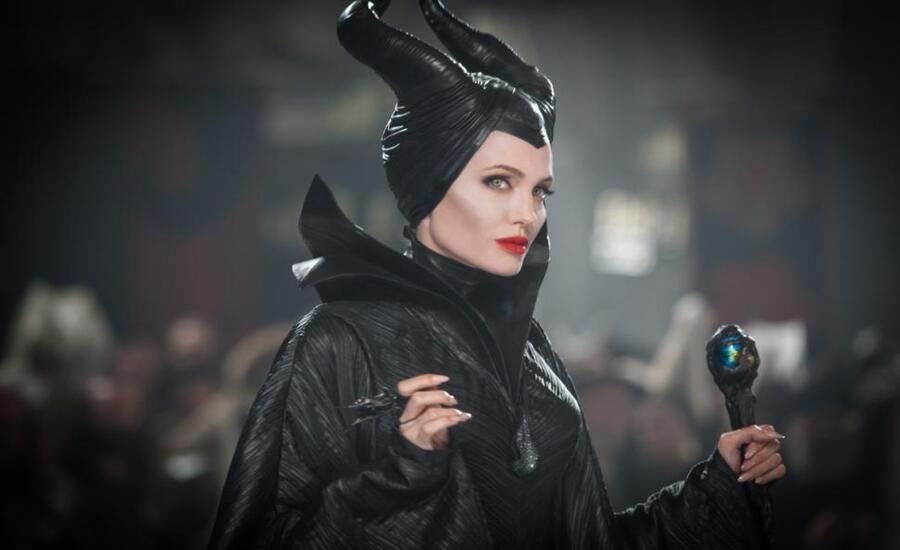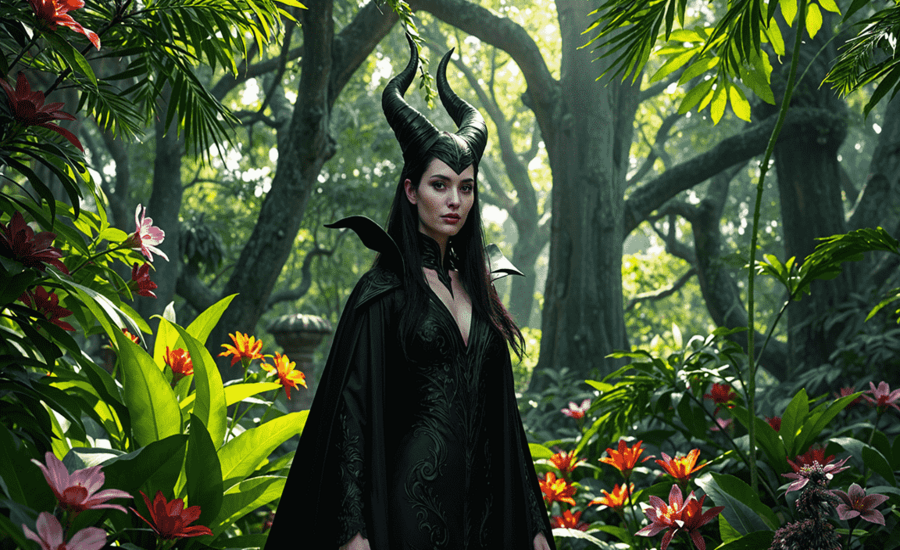Maleficent, the long-lasting villain from Disney’s Sleeping Beauty and its stay-movement adaptations, is a character steeped in thriller, power, and complicated motivations. She is more than just a villain driven by vengeance. Over time, her portrayal has evolved into one of the most nuanced figures in modern-day fairy stories, drawing audiences into the depths of her psyche, motivations, and private evolution. At the coronary heart of this evaluation lies the crucial question: Why wouldn’t Maleficent be a lackey? The solution, as this analysis will demonstrate, is rooted in her autonomy, energy of will, ethical complexity, and resistance to manipulation. Maleficent’s man or woman arc, especially as visible in Disney’s reimagining of her story, cements her as a discernment of commanding independence, a woman who would never allow herself to serve blindly below the authority of others.
The Nature of Maleficent’s Power and Its Implications
The maximum placing factor of Maleficent’s individual is her titanic strength. From her first introduction in Disney’s animated Sleeping Beauty (1959), Maleficent is portrayed as one of the most powerful beings within the kingdom. She instructs magic at a stage that some distance surpasses her friends, able to curse Princess Aurora with a single, dramatic gesture. This show of magical supremacy isn’t just for display; it underscores the autonomy that incorporates being so formidable. Maleficent has solutions to nobody, nor does she need to depend upon others to gain her dreams. In an international in which many effective figures have armies, advisors, and subordinates, Maleficent operates on my own, relying entirely on her magical prowess to impose her will.
Her energy extends some distance past the practical applications of magic. It is also symbolic of her independence. Magic, in Maleficent’s arms, represents a device for self-declaration, used to manipulate the world around her and bend it to her desires. In this light, her refusal to end up a lackey is not pretty much rejecting subservience however about preserving management over her environment. She can not be managed or manipulated because her magic is an extension of her will. The mastery she well-known over it reflects her mastery over herself, making her impervious to the varieties of coercion that might pressure others into submission.
In Maleficent (2014), this independence is explored in greater depth. Unlike inside the authentic animated model, wherein Maleficent’s motivations are in large part tied to her position as an antagonist, the stay-movement reimagining dives deeper into her past, showcasing how her power evolved alongside her emotional adventure. As a younger fairy, she turned into kind and trusting, but after being betrayed with the aid of Stefan, her autonomy became even extra mentioned. It is this beta.

Moral Complexity and the Refusal to Be a Pawn
Beyond her magical competencies, Maleficent’s moral complexity is fundamental to information as to why she could never be a lackey. In the original Sleeping Beauty, her role as the villain appears sincere: she is the evil fairy who curses the innocent princess out of spite for no longer being invited to her christening. However, even within the authentic portrayal, there are guidelines that Maleficent’s motivations are extra layered than they appear. She acts out of a feeling of wounded pride and perceived injustice, no longer just malice. This implies a moral framework in which her moves, although intense, are pushed by using a desire to rectify what she sees as wrong completed to her. This self-justification adds depth to her man or woman and recommendations at the idea that Maleficent isn’t genuinely evil for evil’s sake; she has her reasons.
In Maleficent (2014), this complexity is delivered to the leading edge. The audience is invited to sympathize together with her, understanding that her curse on Aurora stems from a deep experience of betrayal and emotional ache. This shift in perspective transforms Maleficent from a one-dimensional villain into a sad figure. She isn’t always influenced by an easy lust for energy or chaos however with the aid of a choice for justice—or, no less than, revenge for the wrong executed to her with the aid of Stefan. This ethical ambiguity is vital to expertise as to why Maleficent would in no way be a lackey. A lackey serves some other’s will, frequently without question or personal timetable. Maleficent, on the other hand, is pushed by way of her internal compass, improper as it is able to be. She acts according to her very own code, no longer someone else’s, and this code is fashioned with the aid of her private experiences, values, and goals.
Moreover, Maleficent’s journey inside the stay-movement films demonstrates her capacity for exchange and increase, in addition to emphasizing her refusal to be decreased.
Leadership and Command: Maleficent’s Relationship with Others
One of the maximum telling indicators of why Maleficent could never be a lackey is her courting with those around her. In the original animated movie, Maleficent has a set of minions—goons who carry out her bidding. However, these minions are largely ineffective, bumbling fools who fail to seize Aurora or fulfill Maleficent’s instructions. This depiction of Maleficent as a pacesetter, albeit one with incompetent subordinates, contrasts sharply with the concept of her being subservient to a person else. She commands others, however no one commands her. Even in her moments of frustration together with her minions, it is clear that Maleficent perspectives herself as a figure of authority, someone who gives orders in place of taking them.
In Maleficent (2014), her dating Diaval, her form-transferring raven accomplice, similarly illustrates her position of leadership. Diaval is dependable to Maleficent, however, their courting is not one in every of grasp and servant in the traditional experience. Maleficent often treats Diaval with a degree of appreciation and camaraderie that shows she sees him as greater of an ally than an insignificant servant. This dynamic is crucial as it highlights Maleficent’s tendency to build relationships based totally on mutual gain and agree in preference to domination or subservience. Diaval serves Maleficent due to the fact he chooses to, not due to the fact he’s pressured via fear or manipulation. This underscores Maleficent’s ability to encourage loyalty, a trait that stands in stark evaluation to the lackey archetype, that is described by way of forced or compulsory loyalty.
Furthermore, Maleficent’s interactions with Aurora additionally reveal her leadership qualities. Although she first of all curses the kid out of spite, she later turns into a protector of types, looking over Aurora as she grows. By the quit of the first Maleficent fil.
Maleficent’s Independence from Traditional Power Structures
Another key cause why Maleficent would by no means be a lackey lies in her rejection of conventional electricity structures. In each of the lively and stay-action variations, Maleficent stands apart from the hooked-up authority figures of the kingdom. In the original Sleeping Beauty, she is an outsider to King Stefan’s court docket, running from the shadows and the usage of her magic to venture into the king’s authority. She is no longer looking to integrate herself into the dominion’s political hierarchy however rather units herself up as an antagonist to it. Her curse on Aurora is an act of defiance, a way to say her electricity over the royal family and remind them that she isn’t always to be underestimated or omitted.
This rejection of authority is even extra said within the live-movement Maleficent. After being betrayed by Stefan, who becomes king via his treachery, Maleficent isolates herself from human society, chickening out to the Moors, in which she reigns as a sovereign entity. The Moors represent a space loose from the corruption and deceit of the human world, a place where Maleficent can rule without interference from outside forces. Her choice to withdraw from human society and establish her very own realm is a powerful announcement of her independence. She is now not trying to find power via traditional means—marriage, alliances, or conquest—but through self-sufficiency. By creating her own area, Maleficent ensures that she solutions to nobody.
Moreover, Maleficent’s disdain for the human power structures is clear in her interactions with King Stefan in the stay-action movie. When Stefan betrays her by cutting off her wings, Maleficent’s reaction isn’t to look for retribution through conventional channels but to take topics into her personal arms. She curses his daughter, an act that bypasses the political and prison systems.
The Role of Vengeance and Autonomy in Maleficent’s Arc
One of the central riding forces behind Maleficent’s man or woman arc is vengeance. However, her pursuit of revenge isn’t always aimless or unfavorable for its very own sake. It is tied to her preference to reclaim her autonomy after it’s been stolen from her. In both the lively and live-movement versions, Maleficent’s movements are prompted by way of a profound experience of injustice. Furthermore, in the animated Sleeping Beauty, her curse is a response to being slighted by using the royal family. In the live-movement Maleficent, her curse is a response to Stefan’s betrayal. In both instances, Maleficent seeks to reassert her strength and control after it’s been undermined.
This pursuit of vengeance is enormous as it underscores Maleficent’s corporation. Unlike a lackey, who serves at the whim of a master, Maleficent’s movements are driven by her personal goals and desires. She isn’t performing on behalf of someone else; she is acting for herself. This autonomy is relevant to her character and is what makes her this sort of compelling parent. Even whilst her actions are morally questionable, they’re always rooted in her personal quest for justice or revenge. She is never a tool in someone else’s plan but the architect of her personal fate.
Furthermore, Maleficent’s adventure from vengeance to redemption in the live-movement films reinforces her autonomy. Initially, her preference for revenge consumes her, main her to curse Aurora. However, as she watches the woman grow, she starts to remorse for her actions. This shift in attitude is not the result of outside strain but of Maleficent’s very own inner evolution. She chooses to change, to search for forgiveness, and to undo the damage she has brought about. This capability for self-mirrored image and boom is yet every other reason why Maleficent could by no means be a lackey. A lackey does not have the liberty.
The Psychological Depth of Maleficent’s Character
To recognize why Maleficent might not submit to being a lackey, it’s far essential to discover the mental intensity of her individual. Maleficent isn’t always absolutely a villain; she is a fully found-out man or woman with complex feelings, motivations, and internal turmoil. This mental intensity is particularly glaring in the live-action films, wherein her backstory and emotional adventure are explored in greater detail.
At the heart of Maleficent’s character is her experience of betrayal. In Maleficent (2014), her preliminary kindness and consideration are shattered when Stefan betrays her for the sake of energy. This betrayal leaves a deep emotional scar, shaping her movements for the rest of the film. However, it additionally offers her an experience of reason. Her choice for revenge is not pretty much about punishing Stefan but about reclaiming the strength and autonomy that he took from her. This mental motivation units her apart from the typical lackey, who acts out of fear, obligation, or a choice to please their grasp. Maleficent’s moves are pushed by her inner battle, making her miles extra dynamic unbiased determined.
Moreover, Maleficent’s relationship with Aurora adds another layer of psychological complexity to her character. Initially, Aurora is the target of Maleficent’s vengeance, but as the girl grows, Maleficent begins to look at her as more than just a pawn in her revenge scheme. She develops a maternal affection for Aurora, which complicates her feelings of hatred and vengeance. This emotional conflict is a testament to Maleficent’s mental intensity. She isn’t always a static man or woman pushed totally with the aid of a desire for strength or revenge; she is capable of love, remorse, and trade. This emotional complexity is yet another reason why Maleficent could by no means be a lackey. A lackey is usually a flat, one-dimension.
Key Reasons Maleficent Refuses to Be a Lackey:
Autonomy and Control: Maleficent’s significant energy and magical prowess supply her entire manipulate over her environment. She solutions to no person, making it not possible for her to emerge as a servant to others.
Moral Complexity: Her actions are pushed by means of a feeling of justice or revenge, no longer by using subservience. Maleficent follows her own code and can’t be coerced into serving every other’s agenda.
Leadership: She instructions others however does now not permit herself to be commanded. Her courting with Diaval and Aurora displays her capability for leadership and her rejection of subservience.
Rejection of Traditional Power Structures: Maleficent operates outdoor the confines of the dominion’s authority, setting up her personal domain in the Moors and rejecting human energy structures.
Conclusion:
Maleficent is a person defined by means of her autonomy, electricity, and complexity. From her substantial magical strength to her deep experience of justice and betrayal, every issue of her man or woman speaks to her independence. She is a frontrunner, now not a follower; a parent of authority, not subservience. Her refusal to be a lackey isn’t only a rejection of servitude but a testament to her strength of will and personal organization. Maleficent’s journey, mainly as depicted in the live-motion films, showcases her evolution from a discern fed on by way of vengeance to 1 able to love and redemption. This ability for increase, introspection, and leadership ensures that Maleficent will in no way be reduced to the function of a lackey. She is, and continually can be, a force unto herself.
FAQs About Maleficent wouldnt be a lacky.
Why is Maleficent such a powerful character in Disney’s universe?
Maleficent is portrayed as one of the maximum effective beings within the Disney universe due to her giant magical abilities. She is a fairy with unheard-of manage over magic, which lets her solid curses, remodel creatures, and manipulate her surrounding’s results easily. Her power isn’t always just bodily however also symbolic of her independence, autonomy, and willpower. In the stay-movement films, her power is tied to her emotional intensity, with her magic growing stronger as she becomes extra independent and determined to are seeking for revenge or shield those she cares about.
What is the difference between Maleficent in the original animated Sleeping Beauty and the live-action films?
In the authentic 1959 animated Sleeping Beauty, the maleficent costume is provided as a trustworthy villain influenced by way of spite after being snubbed by King Stefan and Queen Leah. She is bloodless, malevolent, and apparently without empathy. In contrast, the live-movement Maleficent (2014) and its sequel explore her backstory, including layers of complexity to her individual. In the live-motion movies, Maleficent is depicted as a betrayed fairy who seeks revenge after being wronged by King Stefan. Her motivations are more emotionally pushed, and she undergoes a change from a vengeful villain to an individual able to love, redemption, and forgiveness.
What motivates Maleficent to curse Princess Aurora?
In the lively Sleeping Beauty, Maleficent curses Princess Aurora out of spite for no longer being invited to her christening, appearing out of wounded delight. However, within the live-motion Maleficent, her curse stems from a deep sense of betrayal through King Stefan, who mutilated her to benefit electricity. Maleficent’s curse on Aurora is her way of looking for revenge in opposition to Stefan, demonstrating her emotional pain and desire for justice after being wronged.
For More Information Visit our Homepage:



